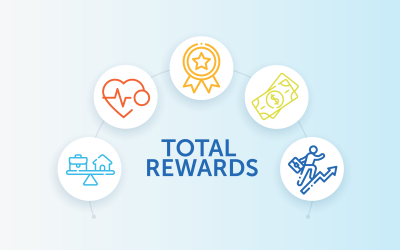The amount of workforce data collected by an automated analytics platform is nothing short of immense. People analytics metrics offer a way to cut through the data to find answers to questions on workforce challenges, and drives HR’s strategic decisions to meet both people-related and organizational goals.
For analytics to be a worthwhile exercise, the careful selection of metrics is imperative. By studying workforce trends in relation to these people analytics metrics, HR and management can determine the impact of initiatives on the organization’s business strategies. The insights derived from analytics also help in managing talent smartly, and aligning human capital with business strategies. The big question is, what metrics should you measure?
Is there such a thing as a perfect set of metrics?
There isn’t a set of metrics uniformly applicable to all organizations. The four, five or more metrics you choose for your organization are those that have a direct impact on your organization while also including a people component. For instance, efficiency and productivity are operational metrics with a human capital component, while machine reliability or quality of raw materials are not.
People analytics metrics can help you gather insights on workforce issues like:
- Increases in absence rates and voluntary turnover
- Poor workforce cost control stemming from salary creep
- Wasted investment due to high new hire attrition
- Risk of a large aging workforce
- Abuse of overtime compensation affecting optimal staffing
- Penetration rate of development and safety programs and much more
Metrics that address the organization’s goals can support strategic decision-making in the areas of:
- Expansion into new markets
- Development of a new product line
- Manufacturing of products currently in the design stage
Consider a scenario where you want to meet the above business goals by taking strategic decisions for your current talent pipeline. Metrics that answer questions like (a) what is the organization’s internal supply of talent? (b) what is the demand for talent in relation to the business strategy? (c) what is the gap identified as a result? can equip you to take strategic steps to close the gaps and work towards your goals.
The right metrics can also enable HR to determine:
- The career pathing of different groups
- Gaps that need proactive workforce planning
- Issues obstructing the potential of promising future leaders
- The big picture about the organization’s progress towards hiring goals
What to keep in mind when finalizing metrics
In finalizing metrics, you must ensure that they are:
Accessible : Visible and available as and when needed
Actionable : Critical to the organization
Auditable : Independently verifiable
Some metrics used by organizations to build a lean and productive workforce, and maintain a competitive edge, include :
Total cost of workforce: The workforce is typically the single largest cost for organizations. By measuring the total cost of workforce, you can get an accurate picture of your workforce spend and make smarter workforce strategy decisions.
Span of control: Management span of control is the ratio derived by dividing the total population (inclusive of management) and the total management population. A true evaluation of span of control helps you recognize workforce mix, and determine if the workforce is too top-heavy or if more management muscle is required.
Revenue per employee: This is a measure of the total revenue against the total number of employees. It assumes more importance when assessing the cost of a lost employee owing to voluntary or involuntary turnover.
By employing the right people analytics metrics, you can develop strategies and programs that optimize workforce planning and support organizational goals – and ultimately avoid analysis paralysis caused from a broad and unfocused workforce analytics approach.




